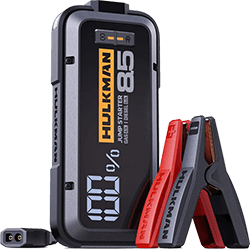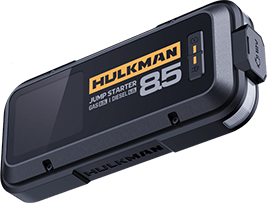Recent Articles
-
Mapping America’s Solar Landscape: Regional and Seasonal Variations November 11, 2025
-
Why Solva Solar Panels Stand Out: From Consumer’s Comment November 06, 2025
-
Unleashing Solar Power: Tips for Using and Maintaining Portable Solar Panels November 03, 2025
Featured Products
note
Unlocking Battery Performance in the Cold: A Deep Dive into Lithium Battery Preheating Technologies
Lithium-ion batteries power everything from electric vehicles (EVs) to smartphones, but their performance takes a hit in cold environments. Low temperatures cause capacity loss, reduced charging efficiency, and even safety risks like lithium plating. Preheating technologies are the key to overcoming these challenges, ensuring batteries perform optimally even in freezing conditions. In this blog, we’ll explore the main preheating methods, compare their performance, and highlight their best use cases, all while keeping things clear and engaging for a broad audience.
In this article, we’ll cover:
- Why Preheating Matters
- Internal Preheating: Harnessing the Battery’s Own Energy
- External Preheating: Controlled Heat from Outside
- Hybrid Preheating: The Best of Both Worlds
- Performance Comparison: Speed, Efficiency, and Cost
- Best Applications for Each Technology
- The Future of Preheating: Smarter, Greener, Smaller
- Conclusin
Why Preheating Matters
American cold weather is a battery’s worst enemy. At subzero temperatures, lithium-ion batteries can lose up to 20-30% of their capacity, charge slower, and risk internal damage. Preheating technologies warm batteries to their ideal operating range (15-25°C), boosting efficiency and safety. These solutions are critical for electric vehicles in winter, large-scale energy storage systems, and even consumer electronics like laptops used in chilly conditions. Let’s break down the three main types of preheating technologies based on their energy source.
Internal Preheating: Harnessing the Battery’s Own Energy
Internal preheating uses the battery’s own energy to generate heat, making it efficient and compact. The most common method is AC heating, where low-frequency alternating current is passed through the battery, generating Joule heat via the battery’s internal resistance. This approach is sleek—no extra heating components are needed—and it’s widely used in EVs for its simplicity and uniform heating. Studies highlight AC heating’s ability to warm batteries evenly, reducing thermal gradients that could harm longevity. (pubs.acs.org)
Another internal method is DC pulse heating, which applies alternating positive and negative current pulses to avoid polarization issues. This technique achieves heating rates of 2-5°C per minute, making it ideal for fast-charging scenarios in cold climates. Its rapid heating capabilities are particularly valuable for EV fast-charging stations, where time is critical.
External Preheating: Controlled Heat from Outside
External preheating relies on components like heaters to warm the battery. Resistive heating is a popular choice, using positive temperature coefficient (PTC) heaters or thin-film resistors to convert electrical energy into heat. It’s cost-effective and mature, with systems costing as little as a few hundred dollars for EVs. However, uneven heating can be an issue, requiring optimized thermal designs to minimize temperature differences (up to 5-8°C in some cases). A review notes that resistive heating is reliable but less efficient for large battery packs due to heat loss.
Liquid heating is another external method, where a heated fluid (like ethylene glycol) circulates through cooling channels in the battery pack. This ensures uniform heat distribution, with temperature differences as low as 3°C. It’s slower (1-3°C per minute) but excels in large systems like EV battery packs or energy storage stations, where consistency is key.
Hybrid Preheating: The Best of Both Worlds
Hybrid preheating combines internal and external methods for optimal performance. A common approach pairs resistive heating with AC heating. In the initial cold phase, external resistive heaters quickly raise the battery’s surface temperature. Once the battery hits around 5°C, AC heating takes over for efficient internal warming. This synergy balances speed and uniformity, achieving heating rates of 4-5°C per minute. Another innovative hybrid method is solar-assisted resistive heating, which uses solar panels to power heaters, reducing reliance on the grid. This is perfect for outdoor applications like portable power stations, as discussed in EV forums. (Reddit)
Performance Comparison: Speed, Efficiency, and Cost
To choose the right preheating technology, we need to compare key metrics: heating rate, energy efficiency, temperature uniformity, and cost.
Heating Rate: Internal methods lead the pack. AC heating achieves 3-6°C per minute, while DC pulse heating can hit 8°C per minute in advanced setups, ideal for fast-charging EVs. Resistive heating (2-4°C per minute) and liquid heating (1-3°C per minute) are slower but reliable. Hybrid systems strike a balance at 4-5°C per minute.
Energy Efficiency and Uniformity: AC heating boasts up to 85% energy efficiency since heat is generated directly inside the battery. Liquid heating, with 70-80% efficiency, excels in uniformity (temperature differences below 3°C). Resistive heating is less uniform (5-8°C differences) but affordable. Hybrid systems offer 80% efficiency and good uniformity (4°C differences).
Cost-wise, resistive heating is the cheapest, making it popular for budget EVs. AC heating costs 1.5-2 times more due to specialized control modules, while hybrid systems are pricier but versatile for premium EVs and energy storage.
Best Applications for Each Technology
The right preheating method depends on the use case:
Electric Vehicles: For fast charging in cold regions, DC pulse heating shines, enabling a -20°C to 20°C warm-up in 30 minutes alongside charging. For daily use, hybrid resistive-AC heating balances cost and performance, boosting winter range by 15-20%. Take the Hulkman Mega portable power station, for instance—its EV-grade NCM battery cells support rapid charging and discharging even in variable winter weather, with solar and car charging options that align perfectly with hybrid preheating for on-the-go EVs.
Energy Storage Systems: Large-scale storage, like containerized units, favors liquid heating for its reliability and low energy loss (under 10%). Portable outdoor units benefit from solar-assisted heating, ideal for camping or emergencies. The Hulkman Mega exemplifies this, operating reliably down to -4°F with a 576Wh capacity, dual-fan cooling, and a BMS for safe, uninterrupted power during extended off-grid sessions in harsh conditions.
Consumer Electronics: Smartphones and laptops use miniaturized PTC resistive heaters, consuming just 1-3W for low-power, compact heating. Wearable devices opt for DC pulse micro-heating to meet size and power constraints. For precision gadgets like drones and cameras, the Hulkman Mega stands out with its ≤15ms UPS switchover, pure sine wave output, and dual PD 100W/65W ports, ensuring fast, stable charging without damaging sensitive equipment—crucial in cold outdoor shoots.
The Future of Preheating: Smarter, Greener, Smaller
Preheating technologies are evolving toward intelligence, efficiency, and integration. AI-driven algorithms could optimize heating parameters based on battery age and weather, potentially boosting efficiency by 10-15%. New materials like carbon nanotube films could push energy efficiency above 90%. Integrated preheating-cooling systems, sharing pipelines and controls, will reduce costs and size. These advancements promise better battery performance in cold climates, making EVs and gadgets more reliable for consumers.
Devices like the Hulkman Mega are already ahead of the curve, featuring Wi-Fi and Bluetooth connectivity for app-based monitoring, alongside premium safety like 94V0 flame-retardant housing and full UL/CE certifications, paving the way for smarter, more resilient portable power solutions.
Conclusion
Lithium battery preheating technologies—internal, external, and hybrid—offer tailored solutions for diverse needs. Whether it’s fast-charging EVs in winter or powering outdoor adventures, these methods ensure batteries stay efficient and safe. As innovations like AI and advanced materials emerge, expect even smarter, more sustainable preheating solutions to keep our devices humming, no matter how cold it gets. For real-world proof, the Hulkman Mega's lightweight 19.13 lbs design, magnetic auto-detect ports, and high-altitude usability up to 13,123 feet make it a game-changer for adventurers relying on portable power in extreme environments.
Learn more and use exclusive code “TNZG4NC7” to get Mega hidden discount at checkout.






















